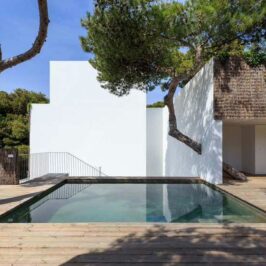The future of public space at Venice Biennale.
“Freespace,” write the curators of this year’s Venice Biennale of Architecture, “celebrates architecture’s capacity to find additional and unexpected generosity in each project.” The Irish architects Grafton (Shelley McNamara and Yvonne Farrell) have set a brief vague enough to embrace all architects who believe their work is a contribution to the city as well as to culture, which most almost certainly do.

But at its core the statement affirms something critical — that all architecture has an impact, positive or negative, on the public realm. The least architecture can do, they suggest, is to give something back. They point to a bench cantilevered from the wall of the Palazzo Medici in Florence as a gesture to public space. But the bench was also a way for the Medicis to make their petitioners wait in full view, appearing tiny against the giant walls. What can look like generosity is often something very different.
The Architecture Biennale has historically oscillated between two poles. One is the building, the object; the other is the space in between. This opposition was there in the exhibition’s earliest incarnations. In 1979, Aldo Rossi’s exquisite floating theatre embodied the ultimate symbolic object, yet it suggested the theatrical nature of the city of Venice itself, a place in which the public persona has always been performed. In 1980, the “Strada Novissima” became the centre of a Biennale entitled The Presence of the Past, introducing the world to the language of postmodernism by lining up façades to create an indoor simulacrum of a street. Subsequent efforts have tended either towards a celebration of architecture as thing (its formal or haptic qualities) in one year, or the social and physical complexity of the city in another.

This year, Farrell and McNamara draw the two together to suggest that the civic realm is the “significant other” of architecture. It is an entreaty to architects to think beyond their own shape- and myth-making. Of course, almost all architects already suggest that they are remaking the public realm. They talk about the street and the square, piazzas and pavement cafés, social mixing and the civic realm. Vibrant public space has become a developer’s cliché — but in most cases, it is not fully considered as part of the city but merely as an add-on to the development in question.
So it’s intriguing that the Irish pavilion at the Irish-curated Biennale concentrates on the slow death of the Irish town square. Rather than focus on the buildings, it looks at the spaces: the mostly empty places that once held markets and livestock auctions, that once buzzed with the aftermath of holy communions and processions and are now underused and unloved.

There is an enjoyable perversity in bringing an exhibition about Irish squares to Venice. The photographs gathered by the curators show a procession of bleak, empty spaces surrounded by defiantly ordinary architecture. But take a look at the historic photos: Kilrush in County Clare has its square filled with donkeys and carts, chickens, ad hoc booths and clumps of (mainly men) in flat caps, chatting and passing the time. Today, it is a blank pedestrianised space devoid of people or animals and adorned only by a few parked cars. An old picture of Carrickmacross in County Monaghan on fair day shows a wide street rammed with cattle, people and carts. Another depicts street life in Ballinrobe, County Mayo, its pavement lined with vegetable sellers and curious children. By contrast, the new shots show towns that have forgotten how to be towns.









Leave a Reply